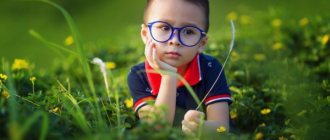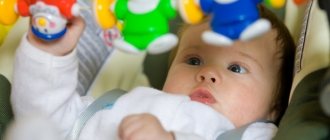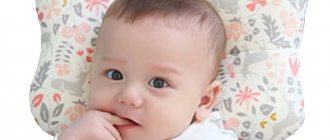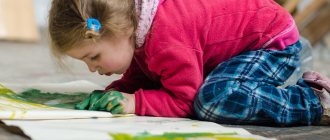The development of children who are 3-4 years old should be carried out taking into account their age and psychological characteristics. At this age, children are very active, inquisitive and eager to acquire new knowledge. At the same time, they are not yet able to concentrate well enough, and therefore it is important that during classes there is a systematic change of exercises, physical activity alternates with mental activity.
Developmental activities for children 3-4 years old should include development exercises:
- fine motor skills;
- speech apparatus;
- vocabulary;
- mathematical knowledge;
- logic;
- artistic skills.
The comprehensive development of a preschooler contributes to the formation of the necessary skills, abilities and mental abilities.
The principle of constructing classes for preschoolers
All classes for preschool children are based on the principle of playful learning and development. Children better assimilate information that is presented to them unobtrusively, in the form of a game.
Classes should be conducted after a night or daytime sleep - this is the very time when the preschooler is ready to learn new material. The duration of classes should not exceed 25 minutes.
For classes, you need to prepare props, make a plan and think through a scenario. It is better if all the exercises in one lesson are united by a common plot. This could be a certain fairy-tale hero who comes to visit the baby and needs help. The latter helps the guest solve problems and find a way out of the situation, simultaneously learning the material and the necessary knowledge.
Long-term lesson plan for the creative circle “Kaleidoscope of Fantasy” for children 3–4 years old
Ekaterina Cherkasova
Long-term lesson plan for the creative circle “Kaleidoscope of Fantasy” for children 3–4 years old
Long-term lesson plan for children 3-4 years old
No. Month Name of lesson ; target.
1 October Drawing: “Grapes for the Crow”
.
Goal: to introduce the non-traditional fine art technique of finger painting. Show techniques for obtaining points (berries)
and short lines
(leaves)
. Develop color perception and sense of composition.
2 October Modeling: “Pancakes for grandma”
.
Goal: to develop the ability to apply plasticine to a surface and flatten the ball with the palm of your hand. Development of fine motor skills.
3 October Drawing: “Hoops for Katya’s doll”
Purpose: to teach how to hold a pencil correctly; exercise pressure; carefully, color the image, do not go beyond the drawing.
4 October Drawing: “Autumn Tree”
.
Goal: to introduce the non-traditional fine art technique of finger painting. Show techniques for obtaining short lines (leaflets)
. Develop color perception and sense of composition.
5 October Application: “Fish made of confetti”
.
Goal: learn to paste pieces of paper onto an image. Add details to the image.
6 October Modeling: “Funny snails on a green lawn made of plasticine”
.
Goal: learn to select details, convey the expressiveness of the image. Develop imagination and the ability to create compositions.
7 October Drawing: “Sun”
.
Purpose: to teach how to hold a pencil correctly; exercise pressure; carefully, color the image, do not go beyond the drawing.
8 October Modeling: “Rainbow”
.
Purpose: applying plasticine to the surface. Teach children to apply plasticine to a surface limited by a contour.
9 November Drawing: “Mom”
.
Purpose: to teach how to hold a pencil correctly; exercise pressure
10 November Drawing: “Sunflower”
.
Purpose: to teach how to hold a pencil correctly; exercise pressure; carefully, color the image, do not go beyond the drawing.
11 November Modeling: “Mittens”
Goal: to identify children’s to independently apply plasticine to a prepared cardboard mold. Learn how to decorate a product with additional material. (beads, bugles, buttons)
12 November Application: “Leaf fall”
.
Goal: learn to paste pieces of paper onto an image. Add details to the image.
13 November Drawing: “Autumn Flowers”
Goal: to introduce the non-traditional visual technique of drawing with cotton swabs. Learn to draw petals by applying strokes at an equal distance from each other from the middle of the flower.
14 November Drawing: “Salute”
.
Goal: to introduce children to the technique of poking with a hard, semi-dry brush. Learn to poke evenly over the entire surface of the sheet.
15 November Drawing: “Funny fly agarics”
.
Goal: to continue to introduce non-traditional fine art techniques of finger painting. Learn to apply dots rhythmically and evenly over the entire surface of the paper. Learn to imitate grass by stretching droplets.
16 December Modeling: “Pretzels”
Purpose: to consolidate the technique of rolling clay or plasticine with straight movements of the palms. Teach how to roll the resulting sausage in different ways.
17 December Application: “Snowman”
.
Goal: learn to stick cotton pads and paper onto an image. Add details to the image.
18 December Drawing: “Paper Toning”
.
Purpose: to introduce the technique of drawing in the raw.
19 December Drawing: “Berries and apples”
Purpose: to introduce the technique of printing with cork, potato signet. Show the technique of receiving a fingerprint.
20 December Drawing: “Bunny”
Goal: to continue to introduce non-traditional fine art techniques of finger painting.
21 December Modeling: “Winter”
(
"It is snowing"
)
Goal: to reveal the ability to independently distribute small balls over a surface. Develop a sense of composition
22 December Application: “Decorating the Christmas tree”
.
Goal: continue to learn how to pinch off small pieces of plasticine from a piece and roll them into balls with a diameter of 7 mm; press the plasticine ball with your index finger, attaching it to the base; Press the buttons onto the plasticine balls in a certain order.
23 December Drawing: Toning paper (preparation for the next classes )
.
Goal: to continue to introduce the technique of drawing in raw
24 December Drawing: “Stars in the sky”
.
Goal: to introduce students to the non-traditional fine art technique of finger painting. Teach children to create rhythmic compositions.
25 December Modeling: “New Year’s toys”
Goal: to activate the mastered methods of modeling and techniques for decorating crafts.
26 January Drawing: Toning paper (preparation for the next classes )
.
Goal: to continue to introduce the technique of drawing in raw
27 January Drawing: “Snowfall outside the window”
Goal: to continue to introduce non-traditional fine art techniques of finger painting. Learn to apply dots rhythmically over the entire surface of the sheet.
28 January Modeling: “Herringbone”
.
Goal: to arouse interest in composing a collective composition. Develop visual-figurative thinking.
29 January Application: Postcard “To the One I Love”
Goal: learn to paste pieces of paper in the shape of a heart onto an image. Add details to the image.
30 January Drawing: “Chicken”
Goal: to introduce children to the technique of poking with a hard, semi-dry brush. Learn to imitate chicken fluff, that is, using the texture created by poking as a means of expressiveness. Cultivate a love for animals. Accustom to accuracy in work.
31 January Drawing: “Fish”
.
Purpose: to teach how to hold a pencil correctly; exercise pressure; carefully, color the image, do not go beyond the drawing.
32 January Modeling: “Snowman”
Goal: to activate and consolidate the ability to sculpt objects consisting of three balls and additional natural material.
33 January Drawing: “Snowfall outside the window”
Goal: to continue to introduce non-traditional fine art techniques of finger painting. Learn to apply dots to the entire surface of the sheet. Develop a sense of rhythm and composition, fine motor skills, attention, and thinking. Cultivate interest in nature and displaying vivid impressions in drawings.
34 February Drawing: “Caterpillar”
.
Goal: to introduce the non-traditional fine art technique of finger painting. Show techniques for making a chain by pressing your finger on the paper, in a certain sequence. Develop color perception and sense of composition.
35 February Application: “Rowan Branch”
Goal: learn to roll colored balls between your palms on a flat surface, develop interest in working with plasticine and colored paper; develop fine motor skills.
36 February Drawing: “Trees in winter”
Goal: learn to roll plasticine between the palms with straight and circular movements of the hands, make sausages, flatten them, pressing them together, press them to the base with finger pressure.
37 February Drawing: “Trees in winter”
Goal: learn to roll plasticine between the palms with straight and circular movements of the hands, make sausages, flatten them, pressing them together, press them to the base with finger pressure.
38 February Lepka: “Planes are standing at the airfield”
Goal: teach children to sculpt an object consisting of several parts. Invoke joy from the created image.
39 February Drawing: “Firebird”
Goal: to continue to introduce non-traditional fine art techniques of finger painting. Teach children to create rhythmic compositions. Develop a sense of rhythm and composition, fine motor skills. Make children want to draw beautiful feathers.
40 February Drawing: “Swan”
.
Goal: to introduce children to the technique of drawing the contour of a palm, to consolidate the ability to complement the image with details. Develop color perception, fine motor skills, attention, thinking. Cultivate an interest in drawing in unconventional ways.
41 March Application: “Postcard for Mom”
Goal: to teach how to correctly select squares by size; continue to learn how to carefully paste the composition.
42 March Drawing: “Look, the sun is coming through the window”
Goal: develop sensitivity to color. Use color to convey feelings. Develop artistic perception.
43 March Drawing: “Transformation of a palm”
Goal: to improve the ability to make palm prints and draw them to a certain image. Develop imagination and creativity .
44 March Lepka: “Flowers for Mom”
Goal: to consolidate the ability to apply plasticine to a surface limited by a contour. Decorate the product with additional material
45 March Drawing: “Spring Fantasy ”
Goal: to practice drawing by washing paint on glass and imprinting glass onto a sheet of paper. Determine what colors “Spring”
, develop
imagination , imagination.
46 March Drawing: “Salty Sea”
Goal: to teach a new technique for image design: sprinkling salt on wet paint to create a three-dimensional image.
47 March Applique: Bouquet for mom.
Goal: continue to teach children to carefully glue the details of the composition.
48 March Drawing: “Spring Tree”
Goal: to continue to introduce children to the unconventional drawing technique “blotography”
.
Learn to combine two techniques in one image (claxography and pointillism)
.
49 March Drawing: “Beautiful pictures from multi-colored thread”
Goal: to continue to teach children various unconventional methods of drawing, to introduce them to a new technique - nitkography (drawing with thread)
.
Develop color perception, the ability to select appropriate color combinations for your composition, develop imagination , creative thinking .
50 April Modeling: “Snail”
Goal: to continue to arouse children's interest in modeling ; teach them to sculpt a snail by folding the column and pulling back the head and horns; continue to teach children to sculpt with their fingers .
51 April Drawing: “Clouds”
Goal: to help children create an expressive image. Cultivating emotional responsiveness. Develop imagination and observation skills.
52 April Drawing: “Orange Song”
Purpose: To develop imagination, artistic perception, hand coordination.
53 April Applique: “Chicken”
.
Goal: learn to stick cotton pads and paper onto an image. Add details to the image.
54 April Drawing: “Draw what you want”
Goal: to teach children to carefully apply drawings onto plasticine. Develop imagination and artistic perception.
55 April Drawing: “ Planets ”
Goal: learn to create an image of the starry sky using mixing paints and spraying. Develop color perception.
56 April Modeling: “Easter egg”
Goal: to consolidate the ability to apply plasticine to the surface and decorate the product with beads, bugles, and sequins.
57 April Drawing: “Flower Meadow”
Goal: to develop visual-figurative thinking. Foster a desire to create original drawings.
58 May Drawing: “Lilac”
Goal: to promote the creation of an expressive image by combining techniques. Develop artistic perception.
59 May Application: “Happy Victory Day!”
Goal: development of children's creative abilities .
60 May Drawing: “Seven-flowered flower”
Goal: develop sensitivity to color. Use color to convey feelings. Develop artistic perception.
61 May Drawing: “Holiday fireworks”
Goal: to clarify and expand children’s about the upcoming holidays (May 1, 9, learn to draw festive fireworks, follow the rules of composition and color scheme.
62 May Modeling: “What we can sculpt”
Goal: to develop children's imagination , complementing a simple sculpted image with accessible means of expression (natural material, speech, play)
;
strengthen children's to roll out and fold plasticine, place one part on top of another and press.
63 May Drawing: “So summer has come”
Goal: to strengthen children’s to draw using their favorite technique. Develop interest in independent artistic activity.
64 May Drawing: “Dandelions”
Goal: to introduce children to a new way of obtaining images. Develop creativity and imagination.
65 May Application: “Merry turtle”
Goal: continue to teach carefully, glue details onto the image, decorate the image with various details, supplement with details from colored paper.
66 May Drawing: “According to plan”
Goal: to teach how to convey your feeling through visual means. Develop creative abilities .
Knowledge and skills of children 3-4 years old
A preschooler aged 3-4 years already has a certain experience and set of knowledge. Typically at this age children are able to:
- distinguish and name colors;
- count to 10;
- collect simple puzzles from 4 - 6 parts;
- remove excess items according to specified characteristics;
- see and name inconsistencies;
- memorize easy poems.
When developing a scenario for a lesson with a preschooler, these nuances should be taken into account. Too simple exercises will not arouse interest in the baby, and complex ones, in addition to misunderstanding, can provoke a protest.
Summary of a lesson on sensory development with children 3–4 years old
Natalia Tsaryuk
Summary of a lesson on sensory development with children 3–4 years old
Summary of educational activities on sensory development for children 3-4 years old
Goal: To teach children to match objects by color; introduce the concept of “round”
; form an idea of the size of objects.
Develop attention and memory. Cultivate interest in different types of activities.
Materials: Sheets of paper with red and blue stripes drawn on them (for each child, one red or blue ball (for each child, three pictures depicting various red objects and three pictures depicting blue objects, cubes, two boxes - red and blue. Small balls of different colors.
Move.
(Before the start of OD, the teacher gives each child a sheet of paper with colored stripes drawn on them.)
The teacher takes a red ball from the basket and begins to play with it. Children, interested in what the teacher is doing, approach him, some take the ball themselves, the teacher invites others to play by taking any ball from the basket.
Educator: I have a red ball, and you, Olya, what color is your ball.
Olya: I also have a red ball.
Educator: Come closer to me, those children who have the same color ball as me. What color is Sasha's ball? What color is Natasha's ball?
That's right guys, we have red balls.
And now I took the blue ball. Who has the same color ball? Next he invites the balls to rest in the basket.
Shows the children a red stripe on his sheet of paper. Guys, what color is the stripe on my sheet?
Children: Red.
Educator: Show a strip of the same color on your pieces of paper.
(Children show.)
Teacher: (Shows the children a blue stripe on his sheet of paper.)
What color is this stripe?
Children: Blue.
Educator: Run your fingers along the blue stripe from the beginning to the very end.
(Children do.)
Educator: Seryozha, what color strip are you running your finger along?
Seryozha: Blue.
Educator: Now draw along the red stripe.
(Children do.)
Educator: Vika, which line are you moving your finger along now?
Vika: Red stripe.
Educator: Run your finger again along the strip from beginning to end. What stripe?
(The child answers. If the child finds it difficult to answer, the teacher helps “long”
.)
Educator: Each of you has cards with color pictures. Place the red picture cards on the red stripe. Dima, name what is drawn in this picture.
Dima: Ball.
Educator: What color is the ball? The ball is red.
Educator: Now put the cards with blue pictures on the blue stripe. Seryozha, name what is drawn in your blue picture.
Valera: Cube.
Educator: What color is the cube? Blue cube.
(If the child does not know the name of the object shown in the picture, then the teacher does this and asks the child to repeat the word that is new to him.)
Exercise “Roll a ball through the gate”
.
Teacher: (Places two boxes of red and blue on the table. The red box contains red balls, and the blue box contains blue ones.) Lena, take a red ball and roll it on the table. What kind of ball?
Lena: The ball is round.
Educator: And what is he like?
Lena: Smooth. (The teacher helps with the answer.)
Educator: What color is it?
(The child answers.)
Educator: Vova, take the blue ball. Describe it.
(The child answers. If necessary, the teacher helps with the answer (the ball is round, blue, rolls on the table)
.)
Gates made of cubes are lined up on the table.
Educator: Guys, let's play a game. Take one ball each and roll it through the gate, tell me what color your ball is and why it rolls?
(Children's answers.)
Educator: our balls, which we put in the basket, have already rested. You can take them and play with them on a walk.
Tasks for the development of children 3-4 years old
When developing a lesson scenario, you can be creative and come up with exercises yourself. Another option is to use ready-made exercises used by teachers in preschool institutions.
Logic and attention
The following exercises will help develop your child’s logic and attention:
- Place 5-6 toys on the table in front of the child. Invite your child to look at them carefully. After this, ask the child to turn away and remove one toy. Let the baby remember and name the toy that is missing. If the child easily copes with the task, then complicate the exercises by removing two toys at a time or increasing their total number.
- Draw and cut out the train. The carriages of a locomotive are various geometric figures moving in a certain sequence. For example: a circle, followed by a square, then a rectangle, etc. Invite your child to continue the logical chain, arranging the trailers in the order you set.
- Prepare pictures of animals, geometric figures or fairy-tale characters. There is one condition - each picture must have a pair. Let the child lay out the pictures and match each one with a pair.
- Invite the baby to solve rhymes - riddles. You read a riddle, and the child says an answer that rhymes with the verse.
Mathematics
At the age of 3-4 years, children already know how to count to 10 , distinguish larger from smaller, short from long, name the basic geometric shapes.
- Give your child pencils and digital coloring books. Let the child color the picture according to the numbers indicating a certain color. At the same time, ask him to pronounce colors and numbers out loud, help the baby if necessary.
- Place toys in front of the baby and offer to count how many there are together. Remove and add toys, changing the total number.
- Invite your baby to count objects selectively. For example, you can count only the apples in the picture or only the animals among the total number of toys.
- Prepare pictures that show objects of different sizes. Let the preschooler name the largest object and the smallest. Ask them to sort the pictures according to the following criteria: from largest to smallest and vice versa.
Speech development
A child of 3 years old can already maintain a dialogue and speak simple sentences. He understands and uses the pronouns “I” and “we”, and can tell what is drawn in the picture.
- Daily articulatory exercises, learning and reciting simple phrases and poems will help improve the sound aspect of speech.
- Show your child the picture and ask him to write a short story based on it.
- "As the animals say." This exercise is relevant both for playing with young children and for classes with preschoolers. Pay special attention to the purity of spoken sounds.
- Read a short fairy tale to your child and ask him to retell the plot.
The world
Children 3 years old already know how to distinguish domestic animals from wild ones, berries from fruits, fish from birds, etc. They name the signs of the seasons and distinguish the time of day .
- When walking with your baby in the park, pay his attention to all the surrounding phenomena: the singing of birds, the rustling of leaves underfoot, the roughness of the bark of the trees, the aroma of flowers. Teach your child to respect nature: to feel the aroma of a flower, you don’t have to pick it - you can bend over to it, trash should be thrown into the trash bin, lawns should not be trampled, etc.
- Show your preschooler various animals and ask him to name which ones are domestic and which are wild. After this, let the child say the names of the cubs of these animals.
- Show your child pictures that depict different seasons and different times of day. Let him name them and explain by what signs he determined this or that time of day or time of year.
Music classes
It is necessary to develop a 3-4 year old child not only mentally, but also physically. Active motor activity accompanied by musical accompaniment has a positive effect on the psycho-emotional mood of a preschooler. Musical classes help instill aesthetic taste, teach you to feel the rhythm and navigate in space.
- Invite your child to dance to different music: rhythmic, melodic, mischievous, sad. Let him not only repeat the movements while dancing, but also learn to hear and convey the mood of a piece of music. Explain that movements should be smooth and measured to slow music, and fast to rhythmic music.
- Learn a children's song with your child and come up with a dance for it together.
- Sing a well-known song to a different tune: cheerful, sad, questioning. Let the baby also try to sing this song, changing the intonation of his voice.
Creation
At the age of 3-4 years, children actively develop their creative abilities. Kids enjoy cutting out, gluing, drawing and making simple crafts under adult supervision.
- Take your child to drawing, modeling from plasticine or salt dough, and appliqué.
- A home puppet theater helps develop a child's imagination. Show your child a fairy tale, and then offer to switch roles. Take the place of the viewer, and give the child the role of director and puppeteer.
- Invite your child to play a role-playing game and act out the plot of a children's fairy tale. It is not necessary to strictly follow the script; improvise with your child and involve new characters in it. You can have your own special and unique fairy tale.
Fine motor skills
Working with your hands helps develop fine motor skills. This could be modeling from plasticine, using mosaics in classes, beads and buttons. During activities that involve the use of small objects, it is necessary to carefully ensure that the child does not bring them to his mouth and taste them.
- Invite your child to create a picture from cereals. To do this, prepare in advance: cardboard with a pattern printed on it, glue, cereal. Carefully apply glue to a certain area of the drawing and let the child sprinkle cereal on this area. Shake off the excess and move on to the next element of the design. To depict the road, use buckwheat, for the sun - millet, flowers can be drawn with curly pasta or beans. Imagine and create with your child.
- Prepare the following items: a plastic bag, a plastic toy, a soft toy, a mitten, a cube. Ask your baby to close his eyes. One by one, give him objects in his hands and ask him to determine what they are. Let the baby carefully touch the object and say what it is: smooth, cold, rustling, fluffy. The set of items can be changed at your discretion.
- Finger exercises help develop fine motor skills.
Classes for children 3-4 years old should be aimed at the all-round development of the preschooler. Any, even minor, achievement of a child should be celebrated and encouraged. If some exercises are difficult for him, you should suggest and help without expressing your dissatisfaction. The right approach to organizing and conducting classes will help develop the child’s cognitive activity and lay the foundation for a future positive attitude towards acquiring new knowledge.
Children's development group from 3 years old
Individual or group lessons in mini-groups of 4 - 7 people.
Individual approach to each child.
Group 3-4 years.
- Mathematics, speech development, the world around us, development of fine and gross motor skills, creative part, exciting warm-ups, work with handouts
More detailed information by phone: +7 (917) 841-79-91
/ Developmental activities - Mom+Baby / Developmental activities - Children's development group from 3 years old / Developmental activities - Children's development group from 5 years old / Developmental activities - Group development of children from 6 years old / Developmental activities on fine motor skills /
Our Studio will give recommendations and develop your child in accordance with age standards.
A child aged 3 to 4 years should be able to:
1. Count to three and show the corresponding number of fingers on your hand.
2. Be able to master the concepts:
- one - many,
- big small,
- high - low, etc. (antonyms)
3. Know the primary colors (red, yellow, green, blue, white, black).
4. Know the basic geometric shapes (circle, square, triangle).
5. Be able to compare objects by size, color, shape.
Be able to compare the number of objects.
6. Be able to select a pair for an object with a given characteristic.
7. Be able to fold a cut picture from 2-4 parts.
8. Be able to find and explain inconsistencies in drawings
9. Be able to find an extra item and explain why he made such a choice.
10. Be able to find similarities and differences between objects.
11. Be able to remember 2-3 pictures.
12. Be able to remember 3-4 words that an adult repeated several times.
13. Be able to remember and repeat the movements that an adult showed 1-2 times,
14. Be able to remember any detail or feature of an object.
15. Be able to complete a task within 5 minutes without distraction.
16. Must find paired objects. Be able to select the right one from a group of objects. be able to pay attention to the properties and characteristics of objects, find similarities and differences between objects.
17. Know the names and be able to show domestic (cow, goat, horse, cat, dog, etc.) and wild (wolf, hare, fox, etc.) animals.
18. Know the names:
- 3-4 birds (sparrow, swallow, crow),
- 3-4 fish (whale, catfish, shark),
- 3-4 insects (grasshopper, butterfly, bee).
19. Know the names of the main plants:
- 3-4 trees (birch, oak, apple tree).
- 3-4 flowers (chamomile, tulip, rose).
20. Know what vegetables, fruits, berries, and mushrooms are.
21. Must have an understanding of the materials from which surrounding objects are made.
22. Know the parts of the day - morning, afternoon, evening, night.
23. Must be able to name natural phenomena - rain, snow, wind.
24. Be able to cut paper with scissors (perform simple appliqué).
25. Be able to use pencils, markers, pens, etc. Be able to draw circles, dots, lines.
26. Be able to trace and color pictures.
27. Be able to name one characteristic of each object.
28. Know the names of the basic actions of people and animals (lying, sitting, running, etc.)
29. Be able to repeat rhymes and songs after adults.
30. Know your first and last name.
31. Be able to control the power of your voice, speak loudly - quietly.
More detailed information by phone: +7 (917) 841-79-91
/ Preschool speech therapist / Speech therapist for schoolchildren / Speech therapy massage / Help with special needs development, mental retardation, mental retardation / Group classes / Child development group from 3 years old / Group for school preparation for children from 5 years old / Group for school preparation for children from 6 years old / Child development group “Psychologist + educational games” / Group for the development of fine motor skills and Creative Workshop for children from 3 to 7 years old / English language group for preschoolers / English language group for primary school children / English language group for older children schoolchildren / FAST TEACHING READING / Program for left-handed children (left-handed) / Improving reading (increasing reading speed) / Handwriting correction / Summer intensive / Child psychologist / Group SPECIAL CHILD / Preparing for school / Developmental mathematics / Development of attention, memory, logic / Training literacy, speech development / Preparation for the Unified State Exam in English / Preparation for the Unified State Exam in English / Speech pathologist / Logorhythmics / Stuttering / STARTING SPEECH / Stuttering /








